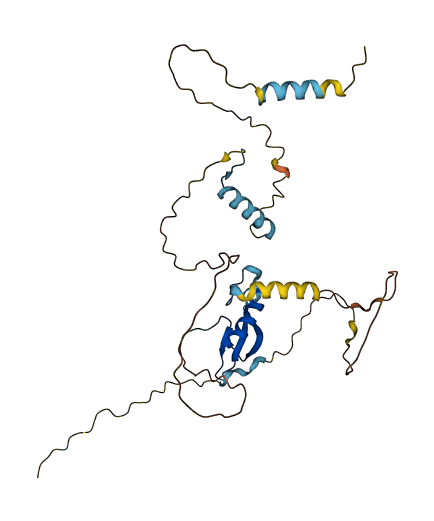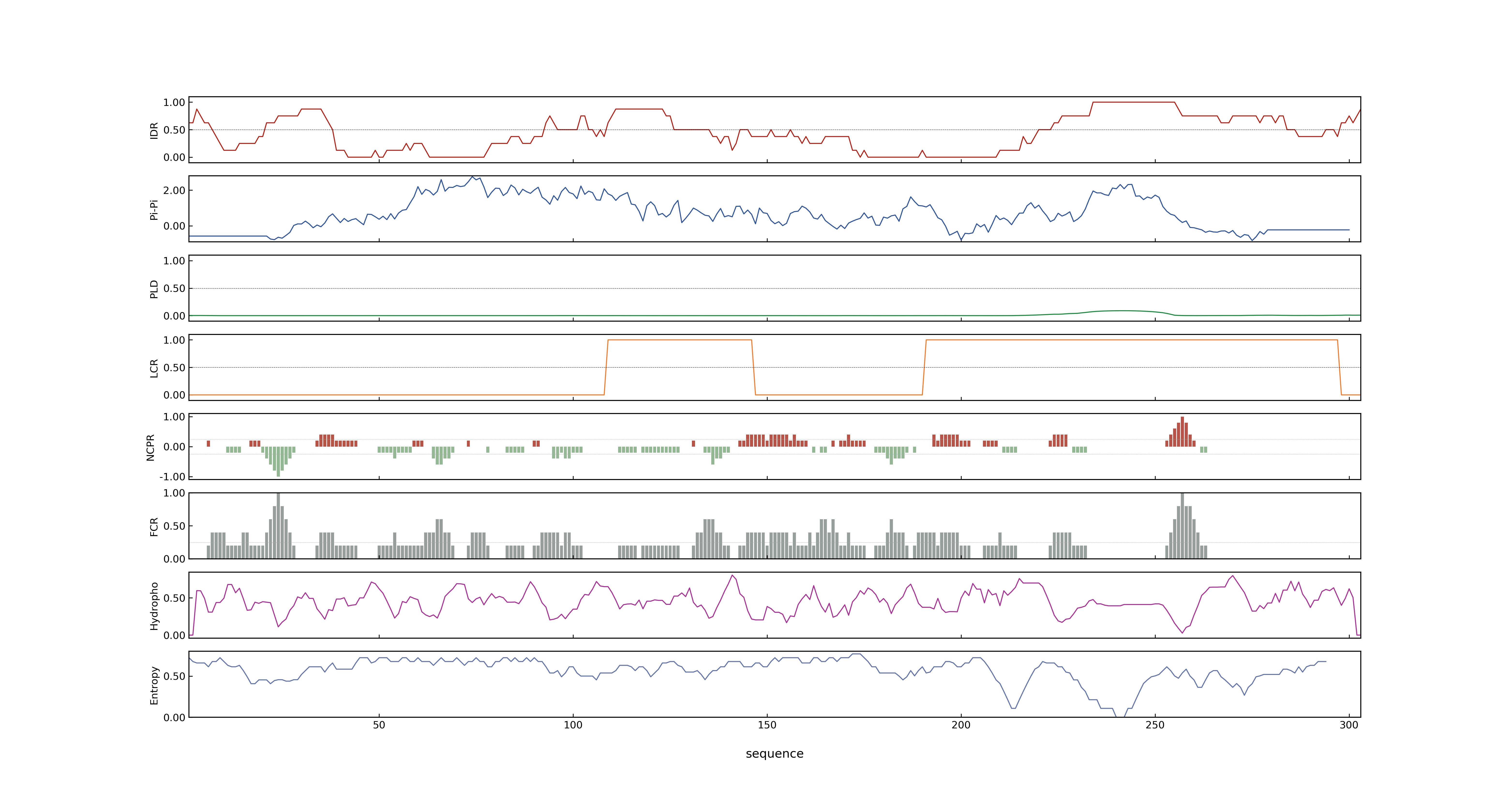- Information
- Symbol: AP59,OsBIERF3,OsAP59
- MSU: LOC_Os02g43790
- RAPdb: Os02g0654700
- PSP score
- LOC_Os02g43790.1: 0.9735
- PLAAC score
- LOC_Os02g43790.1: 0
- pLDDT score
- 63.3
- Protein Structure from AlphaFold and UniProt
- MolPhase score
- LOC_Os02g43790.1: 0.99971252
- MolPhase Result
- Publication
- Molecular characterization of four rice genes encoding ethylene-responsive transcriptional factors and their expressions in response to biotic and abiotic stress, 2006, J Plant Physiol.
- Overexpression of the rice EREBP-like gene OsBIERF3 enhances disease resistance and salt tolerance in transgenic tobacco, 2005, Physiological and Molecular Plant Pathology.
- Overexpression of the Transcription Factor AP37 in Rice Improves Grain Yield under Drought Conditions, 2009, Plant Physiol.
- Mutation of OsGIGANTEA Leads to Enhanced Tolerance to Polyethylene Glycol-Generated Osmotic Stress in Rice., 2016, Front Plant Sci.
- Genbank accession number
- Key message
- Expression of OsBIERF1, OsBIERF3 and OsBIERF4 was induced by treatments with BTH and salicylic acid, chemical inducers capable of inducing disease resistance response in rice
- In the BTH-treated rice seedlings, expression of OsBIERF1, OsBIERF3 and OsBIERF4 was further induced by infection with Magnaporthe grisea, the rice blast fungus, as compared with those in water-treated seedlings
- The rice OsBIERF3 encodes a protein belonging to the ethylene-responsive element binding protein (EREBP) transcription factor family and was shown to be induced by treatments with chemical inducers of disease resistance response, infection with the blast fungus, Magnaporthe grisea, and by treatments with some abiotic stress conditions, e
- In contrast, grain yield in OsCc1:AP59 plants in the field was reduced by 23% to 43% compared with controls under both normal and drought stress conditions
- To better understand the function of OsBIERF3 in disease resistance response and abiotic tolerance, we overexpressed the OsBIERF3 gene in tobacco by Agrobacterium-mediated leaf disc transformation with a construct containing the OsBIERF3 ORF under control of the cauliflower mosaic virus 35S promoter
- Moreover, OsBIERF1, OsBIERF3 and OsBIERF4 were also up-regulated by salt, cold, drought and wounding
- The overexpression of AP37 and AP59 in rice under the control of the constitutive promoter OsCc1 increased the tolerance to drought and high salinity at the vegetative stage
- Our results suggest that OsBIERF3 may play important roles in disease resistance response and salt tolerance
- Overexpression of the rice EREBP-like gene OsBIERF3 enhances disease resistance and salt tolerance in transgenic tobacco
- Moreover, the OsBIERF3-overexpressing transgenic tobacco plants also showed increased tolerance to salt stress
- Connection
- AP59~OsBIERF3~OsAP59, OsBIERF1, Molecular characterization of four rice genes encoding ethylene-responsive transcriptional factors and their expressions in response to biotic and abiotic stress, Expression of OsBIERF1, OsBIERF3 and OsBIERF4 was induced by treatments with BTH and salicylic acid, chemical inducers capable of inducing disease resistance response in rice
- AP59~OsBIERF3~OsAP59, OsBIERF1, Molecular characterization of four rice genes encoding ethylene-responsive transcriptional factors and their expressions in response to biotic and abiotic stress, In the BTH-treated rice seedlings, expression of OsBIERF1, OsBIERF3 and OsBIERF4 was further induced by infection with Magnaporthe grisea, the rice blast fungus, as compared with those in water-treated seedlings
- AP59~OsBIERF3~OsAP59, OsBIERF1, Molecular characterization of four rice genes encoding ethylene-responsive transcriptional factors and their expressions in response to biotic and abiotic stress, OsBIERF1 and OsBIERF3 were activated in an incompatible interaction but not in compatible interaction between rice and M
- AP59~OsBIERF3~OsAP59, OsBIERF1, Molecular characterization of four rice genes encoding ethylene-responsive transcriptional factors and their expressions in response to biotic and abiotic stress, Moreover, OsBIERF1, OsBIERF3 and OsBIERF4 were also up-regulated by salt, cold, drought and wounding
- AP59~OsBIERF3~OsAP59, OsBIERF4, Molecular characterization of four rice genes encoding ethylene-responsive transcriptional factors and their expressions in response to biotic and abiotic stress, OsBIERF3 and OsBIERF2 belong to Classes I and II, respectively; while OsBIRERF1 and OsBIERF4 are members of Class IV
- AP59~OsBIERF3~OsAP59, OsBIERF4, Molecular characterization of four rice genes encoding ethylene-responsive transcriptional factors and their expressions in response to biotic and abiotic stress, Expression of OsBIERF1, OsBIERF3 and OsBIERF4 was induced by treatments with BTH and salicylic acid, chemical inducers capable of inducing disease resistance response in rice
- AP59~OsBIERF3~OsAP59, OsBIERF4, Molecular characterization of four rice genes encoding ethylene-responsive transcriptional factors and their expressions in response to biotic and abiotic stress, In the BTH-treated rice seedlings, expression of OsBIERF1, OsBIERF3 and OsBIERF4 was further induced by infection with Magnaporthe grisea, the rice blast fungus, as compared with those in water-treated seedlings
- AP59~OsBIERF3~OsAP59, OsBIERF4, Molecular characterization of four rice genes encoding ethylene-responsive transcriptional factors and their expressions in response to biotic and abiotic stress, Moreover, OsBIERF1, OsBIERF3 and OsBIERF4 were also up-regulated by salt, cold, drought and wounding
- AP37~OsERF3, AP59~OsBIERF3~OsAP59, Overexpression of the Transcription Factor AP37 in Rice Improves Grain Yield under Drought Conditions, Two genes, AP37 and AP59, representing subgroups I and II, respectively, were functionally characterized
- AP37~OsERF3, AP59~OsBIERF3~OsAP59, Overexpression of the Transcription Factor AP37 in Rice Improves Grain Yield under Drought Conditions, The overexpression of AP37 and AP59 in rice under the control of the constitutive promoter OsCc1 increased the tolerance to drought and high salinity at the vegetative stage
- AP37~OsERF3, AP59~OsBIERF3~OsAP59, Overexpression of the Transcription Factor AP37 in Rice Improves Grain Yield under Drought Conditions, Microarray experiments identified 10 and 38 genes that are up-regulated by AP37 and AP59, respectively, in addition to 37 genes that are commonly induced by both factors
- AP59~OsBIERF3~OsAP59, OsAP37, Mutation of OsGIGANTEA Leads to Enhanced Tolerance to Polyethylene Glycol-Generated Osmotic Stress in Rice., In addition, qRT-PCR and microarray analysis revealed that the transcript abundance of some osmotic stress response genes, such as OsDREB1E, OsAP37, OsAP59, OsLIP9, OsLEA3, OsRAB16A, and OsSalT, was significantly higher in osgi than in WT plants, suggesting that OsGI might be a negative regulator in the osmotic stress response in rice
- AP59~OsBIERF3~OsAP59, OsGI, Mutation of OsGIGANTEA Leads to Enhanced Tolerance to Polyethylene Glycol-Generated Osmotic Stress in Rice., In addition, qRT-PCR and microarray analysis revealed that the transcript abundance of some osmotic stress response genes, such as OsDREB1E, OsAP37, OsAP59, OsLIP9, OsLEA3, OsRAB16A, and OsSalT, was significantly higher in osgi than in WT plants, suggesting that OsGI might be a negative regulator in the osmotic stress response in rice
- AP59~OsBIERF3~OsAP59, OsLEA3~OsLEA3-1, Mutation of OsGIGANTEA Leads to Enhanced Tolerance to Polyethylene Glycol-Generated Osmotic Stress in Rice., In addition, qRT-PCR and microarray analysis revealed that the transcript abundance of some osmotic stress response genes, such as OsDREB1E, OsAP37, OsAP59, OsLIP9, OsLEA3, OsRAB16A, and OsSalT, was significantly higher in osgi than in WT plants, suggesting that OsGI might be a negative regulator in the osmotic stress response in rice
- AP59~OsBIERF3~OsAP59, OsSalT, Mutation of OsGIGANTEA Leads to Enhanced Tolerance to Polyethylene Glycol-Generated Osmotic Stress in Rice., In addition, qRT-PCR and microarray analysis revealed that the transcript abundance of some osmotic stress response genes, such as OsDREB1E, OsAP37, OsAP59, OsLIP9, OsLEA3, OsRAB16A, and OsSalT, was significantly higher in osgi than in WT plants, suggesting that OsGI might be a negative regulator in the osmotic stress response in rice
Prev Next

